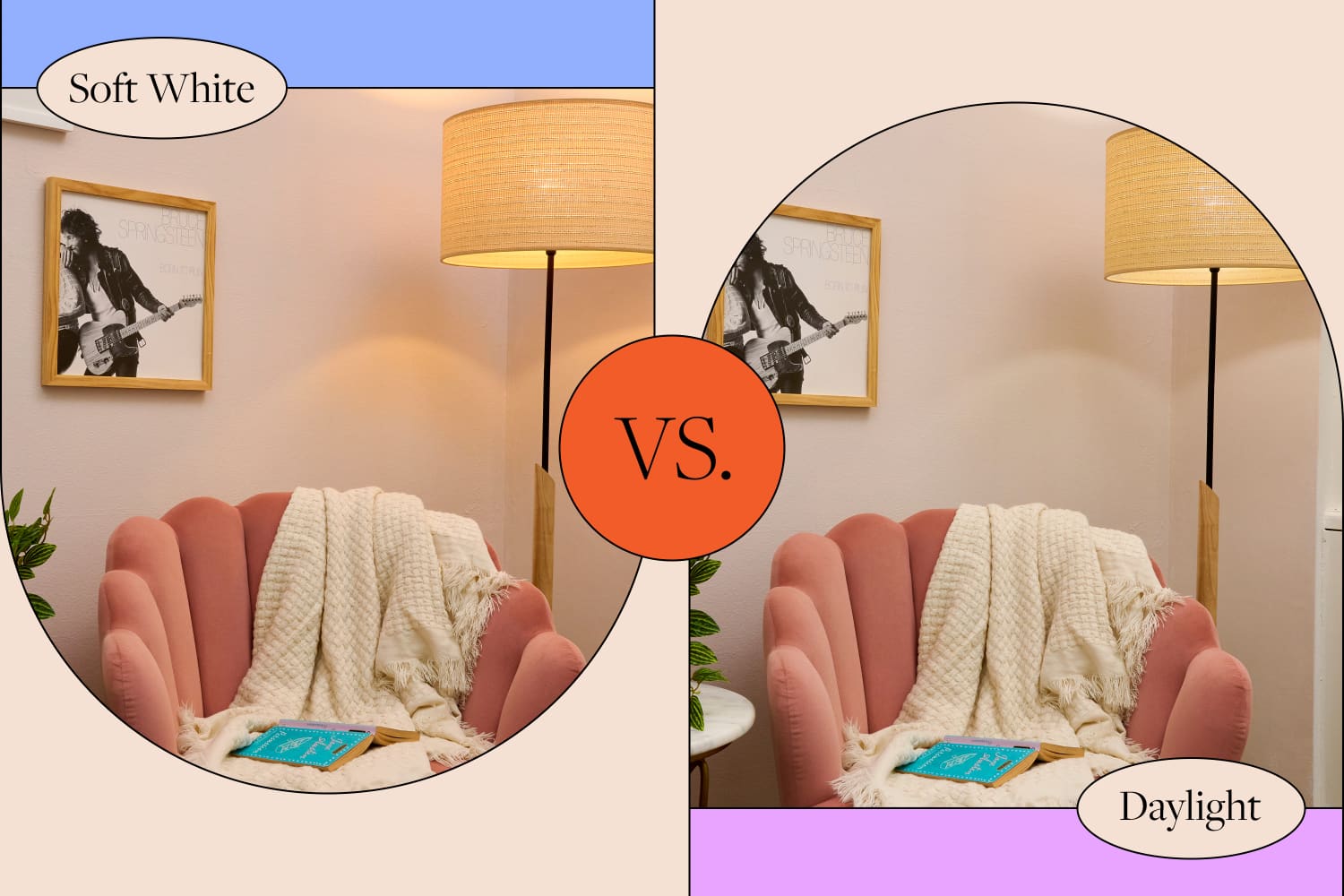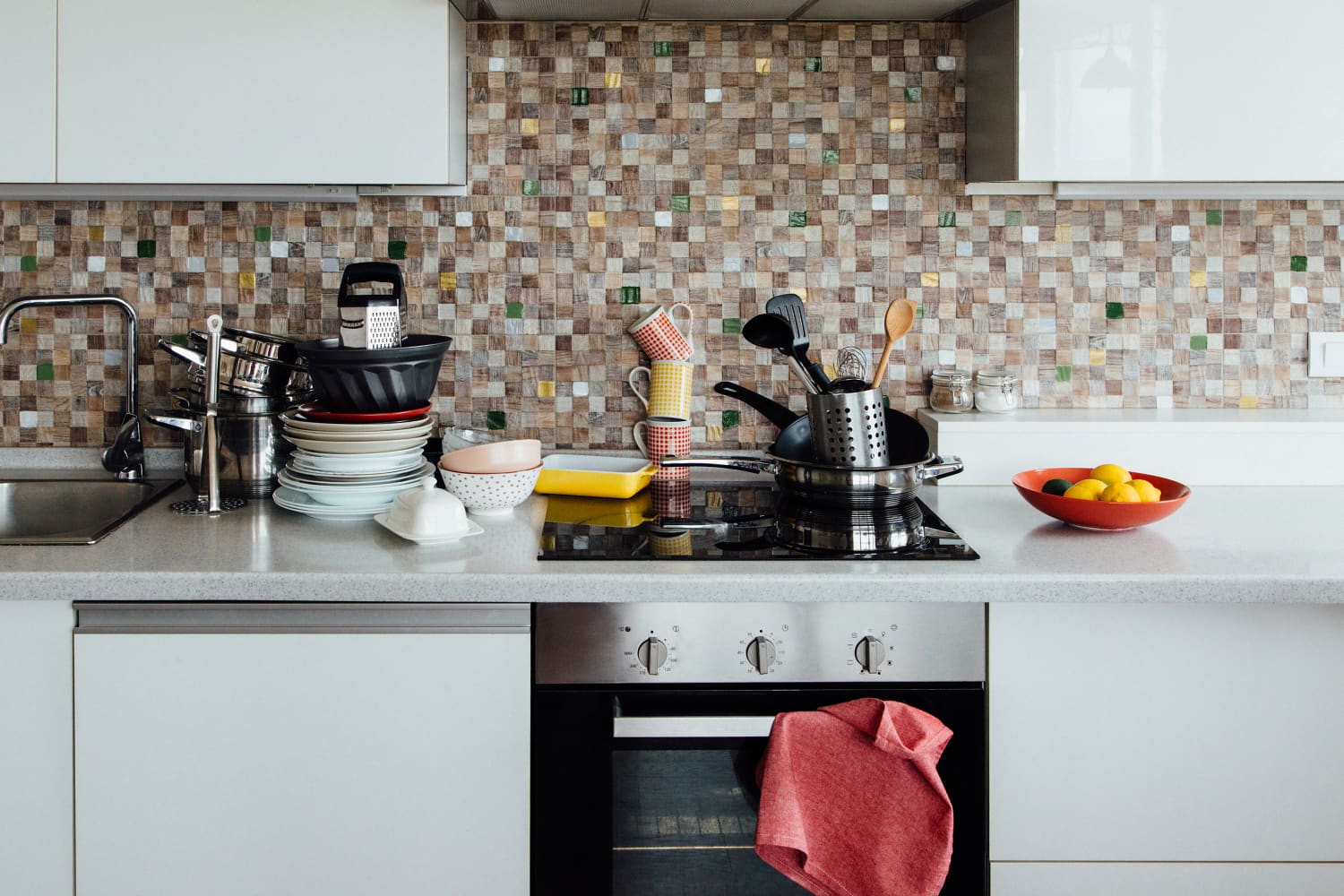
As a new homeowner, there are so many things to consider when you’re setting up your space — your layouts, your furniture, and, of course, your lighting. While I was immersed in looking up living room lighting ideas and kitchen lighting ideas, I realized I was getting a little ahead of myself — the first thing I had to figure out is which lightbulbs to buy.
As a lifelong renter, I’ve never really had to question what kind of lightbulbs I use, so this is a first. But how to choose? A stroll down the lighting aisle offers both daylight and soft white options, and I never know which ones to put in my cart. Determined to learn the difference, I turned to lighting experts photographer Patricia Burke and interior designer Jessica Dorling, who gave me a crash course in lighting basics and how to pick between daylight vs. soft white lightbulbs.
To understand the difference between daylight and soft white bulbs, I first needed to learn a little bit about color temperature, or the appearance of the light produced by a bulb. According to Burke, “Color temperature refers to the hue of visible light, measured in Kelvin (K).” A lower Kelvin value indicates warmer, yellowish light that feels inviting and cozy. Higher Kelvin values indicate cooler, bluish light that is more akin to bright, crisp daylight.
Soft white bulbs have a color temperature that falls between 2700K to 3000K and emit a soft, warm glow. Choosing a soft white bulb gives off a similar feeling to candlelight or firelight. The big takeaway? If you want to create an intimate and welcoming atmosphere, you’ll definitely want to opt for soft white bulbs.
Daylight bulbs have a color temperature that falls between 5000K and 6500K. They’re called daylight bulbs because the light they give off is very similar to natural outdoor lighting, which is bright and almost blue in color. Therefore, if you need sharp, crisp lighting to perform specific tasks, daylight bulbs may be the best choice.
Soft White vs. Daylight Bulbs: How to Choose Between the Two
When choosing light bulbs for your home, it’s helpful to base your decision on not only the function of a room, but also how you want the space to look and feel. “Soft light bulbs are ideal for interior spaces like living areas and bedrooms, as well as for landscape lighting to avoid plants appearing unnaturally blue at night,” explains Burke.
Dorling agrees, saying, “Soft light is more universal and pleasing to the eye, making it suitable for use anywhere in the home, both interior and exterior.”
Daylight bulbs, however, are not without their uses. Because they emit natural-looking light, they are perfect for workshops, barns, and craft rooms. Dorling recommends daylight bulbs for “anywhere you need bright, clear light for tasks that require attention to detail.”
If you find yourself truly at a crossroads, Burke has one overall piece of advice. “When faced with a choice in a store like Home Depot, opting for soft light bulbs is generally recommended unless specific color accuracy is required for tasks like art or design work.”
NB: Ratingmania is a place to find the finest discounts on the internet and all the necessities.
Source url www.apartmenttherapy.com
lighting,Styles & Trends,trends,team:style,platform:search








